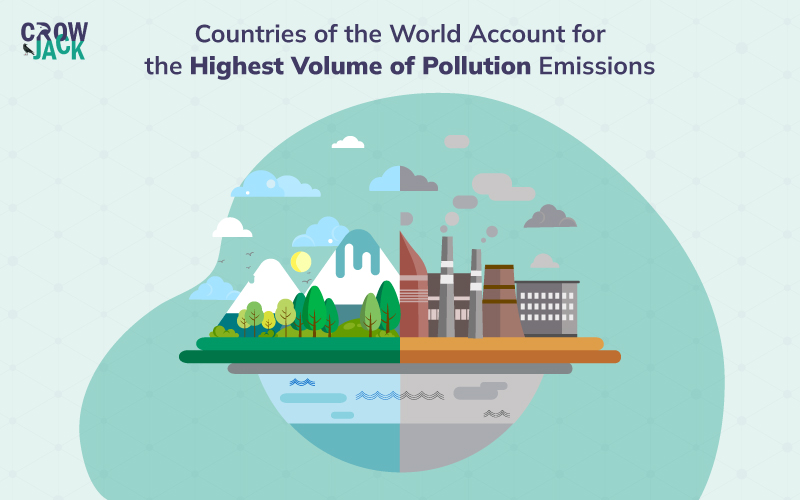Introduction
Apple is a globally renowned brand that has a leading position in the global consumer electronics, software, and web services industry. This article aims to delve deep into the analysis of the industry using the PESTLE analysis to evaluate the external business environment for Apple.
With respect to the external environment, PESTLE analysis will look into the political, economic, social, technological, legal, and environmental influences in the industry that will help the company determine the right path for its future strategies for greater customer acquisition and market penetration. So, let us get started with the PESTLE analysis of Apple Inc.
Table of Contents
Comprehensive PESTLE Analysis of Apple Inc
Political factors affecting Apple
The consumer electronics industry is largely dependent on the global political environment as it involves setting up manufacturing plants in other countries, sharing technological expertise with other countries, and imports of semiconductor chips and other parts from different countries. The current political environment is facilitated by Free Trade Agreements (FDAs), technology transfer agreements, reduction in trade tariffs and these developments have a positive impact on the consumer electronics and software industries. The US has flourishing trade relations with most big economies of the world where the demand for consumer electronic goods is highest. However, the US-China trade dispute can be a major political issue affecting the customer acquisition ambitions of US-based consumer electronics companies in the Asia-Pacific market. Also, the industry has a large number of suppliers from China and key players in the industry have factories in China. Thus, the ongoing US-China trade war can create adverse situations for the industry.
Economic factors affecting Apple
In terms of revenue in the consumer electronics industry, China, USA and India are the largest players with China being the largest contributor to the revenue generation in the industry (Revenue of the consumer electronics market worldwide by country 2019 | Statista, 2022). After the global economies plunged due to COVID-19, the leading economies of the world are recovering and showing signs of growth in the future. In the fourth quarter of 2021, the US economy grew by 6.9 percent and surpassed the projections of growth at 5.5 percent (United States GDP Growth Rate - 2021 Data - 2022 Forecast - 1947-2020 Historical, 2022). Further, the economy of Asia is projected to grow at 5.3 percent and the inflation rate forecast is 2.7 percent. These are positive signs for the industry that economies are bouncing back after heavy losses to the pandemic. In the context of the global smartphone market, the market is expected to grow at 9.5 percent per annum and is anticipated to reach $795.3 by the end of 2027 (Markets, 2022). The disposable income in leading economies is high despite the effects of the pandemic and the demand in the industry is increasing at a good pace. However, due to the supply chain disruptions, the volume of shipments in the industry is falling and heavy financial losses are being experienced. Heavy losses due to supply chain issues are forcing companies to increase prices.
Social factors affecting Apple
The level of consumerism is high in the developed and emerging markets and people associate a status symbol with premium segment products in the industry. Also, as consumers are educated, they are becoming more selective and choosy about their purchases of electronics, online services, and software. Customers are specific about their requirements and have many alternatives to choose from as price variations are high in the industry. The high competition in the industry and the fact that customers have many choices are pushing companies to bring greater innovation and offer products at competitive prices. As per Statista, consumer spending on technology and gadgets is expected to reach 2.06 trillion by 2023 which is a positive sign for the industry(Topic: Consumer electronics in the United States, 2022). Consumers are proactively spending on advanced technologies and gadgets. A large part of them associate prestige with products from premium brands. Also, there is a large shift in consumers buying preferences in terms of showing a greater inclination towards e-commerce buying and evaluation companies on the basis of their sustainability commitments and practices.

Technological factors affecting Apple
The stakes for technological innovations are very high in the consumer electronics and software industries. The leading economies of the world are spending exorbitant amounts on research and development. In 2021, China’s investment in research and development increased by 10 percent and it now spends 2.4 percent of its GDP on R&D(China again boosts R&D spending by more than 10%, 2022). Besides, the US spends more than 3 percent of its GDP on R&D. The telecom sector is also changing rapidly with the latest technologies like 5G. Furthermore, wearable technology, augmented reality, virtual reality, communication robots, customer self-service tools, and IoT are the leading technology trends in the industry. With respect to online services and software, blockchain, edge computing, quantum computing are among the trends reshaping the future.
Legal factors affecting Apple
The US and the UK have strong anti-competitive and anti-trust laws. Besides, as per the United States federal laws, the industry needs to follow the US Export Administration Regulations for exports outside the US. Each software product and consumer electronics item is required to have an Export Control Classification Number, Commodity Code, and a Harmonized Tariff Schedule code. Further, even China’s Anti-Monopoly law also prevents anti-competitive activities. Besides, there are various consumer protection laws specific to each nation that the industry needs to comply with. Data protection and privacy laws are also applicable in the industry of online services and software as a service (SaaS). Moreover, for electronics, there are different norms and regulations regarding product safety and user safety.
Environmental factors affecting Apple
Large-scale electronic waste production, ozone depletion, and pollution are the main environmental issues linked to the industry. Now that countries have sustainability commitments as per international treaties like the Paris Agreement, the industry is being closely monitored and checked for negative impact on the environment. In the US, the regulations by the Environmental Protection Agency that impact the industry include the Greenhouse Reporting Program, National Emissions Standards for Hazardous Air Pollutants, and the Significant New Alternatives Policy. Further, as a part of environmental management, the industry needs to comply with ISO 14001:2005 standards. Lastly, the Clean Water Act and the Clean Air Act in the US also directly impact the industry.

Furthermore, stricter environmental laws are also emerging in Asia with both China and India working on sustainability obligations. China is the largest contributor to carbon emissions but has pledged to become a carbon-neutral country by 2060 ("How far can China's new carbon market cut its emissions?", 2022). India has also set a target of being a zero-emission country by 2070 and these policies will affect consumer electronics factories in India and China.
To encapsulate, in the context of Apple, the ongoing US-China trade disruptions and the supply chain issues can post major problems. However, the changing inclination in people’s preferences to buy premium smartphones and gadgets in emerging markets like China, India, Brazil, and other countries is a positive development for the company. By exploiting these increasing opportunities in the emerging markets, Apple can build a strong customer base in these countries. For that, Apple should focus on unique marketing strategies and should constantly work on innovation to find ways to attract new customers in emerging markets. Moreover, Apple should bring in a broader product range targeting more customer segments in emerging countries rather than limiting itself completely to a premium brand. The overall external business environment is favorable for Apple to succeed in its strategic goals. Also, to learn about the internal strengths and weaknesses of the company, you can go through our diligent SWOT analysis of Apple.
Recommended Readings
References
Statista. 2022. Revenue of the consumer electronics market worldwide by country 2019 | Statista. [online] Available at: https://www.statista.com/forecasts/758660/revenue-of-the-consumer-electronics-market-worldwide-by-country [Accessed 11 February 2022].
Tradingeconomics.com. 2022. United States GDP Growth Rate - 2021 Data - 2022 Forecast - 1947-2020 Historical. [online] Available at: https://tradingeconomics.com/united-states/gdp-growth [Accessed 11 February 2022].
Markets, R., 2022. $795.3 Billion Smartphone Global Market to 2027 - Trend Outlook and Growth Opportunities. [online] Prnewswire.com. Available at: https://www.prnewswire.com/news-releases/795-3-billion-smartphone-global-market-to-2027---trend-outlook-and-growth-opportunities-301379557.html [Accessed 11 February 2022].
Statista. 2022. Topic: Consumer electronics in the United States. [online] Available at: https://www.statista.com/topics/7064/consumer-electronics-in-the-united-states/#:~:text=The%20global%20consumer%20spending%20on,estimated%20as%20of%20July%202020. [Accessed 11 February 2022]
Science.org. 2022. China again boosts R&D spending by more than 10%. [online] Available at: https://www.science.org/content/article/china-again-boosts-rd-spending-more-10 [Accessed 11 February 2022].
How far can China's new carbon market cut its emissions?. (2022). Retrieved 11 February 2022, from https://www.weforum.org/agenda/2021/11/new-carbon-market-slash-chinas-emissions/#:~:text=The%20world's%20largest%20contributor%20to,achieving%20carbon%20neutrality%20by%202060.

 Proof Reading
Proof Reading  Copy Writing
Copy Writing  Resume Writing
Resume Writing  Blogs
Blogs Guides
Guides SOP's
SOP's Student Resources
Student Resources Research Topics
Research Topics Login
Login Register
Register



